Racer / Inventor: John Bowden
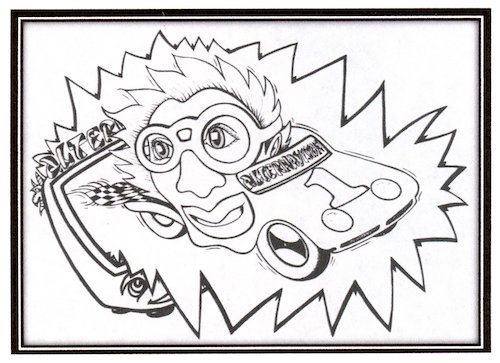
John Bowden is a Renaissance man: Race car driver, gardener, inventor, a magnet for like-minded individuals, a community builder… he may be Emmett Grogan.
While I want to focus on his life as an inventor, his comments concerning racing lead nicely into a consideration of his invention that most captivated me: Alternavision.
Here is an excerpt from an article Mr. Bowden wrote on racing.
“When you become fully dedicated to racing, as I have done in recent years, and find yourself contending in the final laps for the lead, you notice that winning seems to be related to the use of the imagination. I would say, in fact, that it is with the imagination that you create the opening through which you move to the front. There is, of course, the moment-to-moment reality of the race. You must be tuned in to that. But on top of that must be added a touch of imaginative thinking. Coleridge said that the imagination is ‘thinking with a bit of will in it.’ That’s what I’m talking about. You imagine your way through an ever-changing pattern. The way opens up. Not always but often enough for you to believe that the imagination is critical to advancing your position.”
Alternavision
Mr. Bowden made his point of view, his philosophy, accessible with an invention he called Alternavision. Never have I seen anything so simple deliver so much. Made of cardboard, an egg-carton-like grid, and translucent plastic, Alternavision folds into a rectangular box that is then positioned against the screen of a color television. The result is a kaleidoscopic display of color and pattern. Each square of the Alternavision screen is its own color, a color that changes as the activity on the screen behind it changes.
I made as many as eighty presentations around the country using Alternavision. The presentations were on perception, imagination, and creativity. I sold Alternavisions at these presentations. I’m no salesman but they say that if you are to be a salesman, you must believe in your product. I believed in Alternavision.

The purpose of my presentations was to give audience members the experience of their imagination… as Mr. Bowden suggested, the imagination is critical to moving ahead (developmentally, I wanted to say, i.e., as a person).
The Four Levels of the Imagination
Level 1: First, I emphasized that we see what we are interested in seeing. We see what our history permits us to see. Or, as Buddhists say: Desire affects perception.
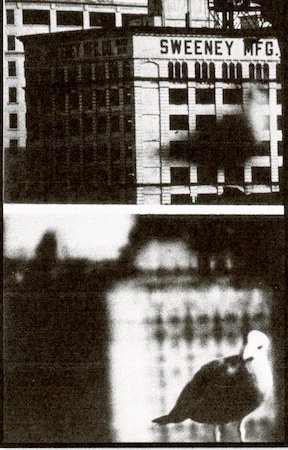
(I have lost the reference to this picture. My apologies to the photographer.)
If you are interested in buildings, then yours is the view at the top. If you are interested in birds, then yours is the view at the bottom. But your eyes are oriented in the same direction. The senses present to us what our histories allow them to present. (“As I am, so I see” is the way Emerson put it — from his essay, “Experience”.)
Level 2: It is then but a short step to the next level of the imagination, to what William Blake called double vision. If you are seeing what your history, your interests, your desires permit you to see, then everywhere you look you are seeing you. So many things are available to be seen (heard, touched, sensed), but of all the many things available, you see this and not that. You see what your life has readied you to see. In a very important sense, you see you.
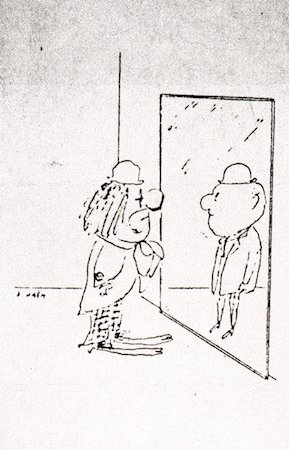
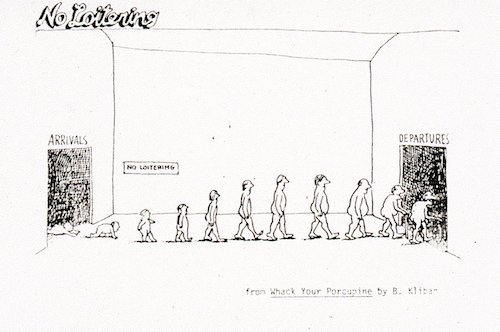
The Sphinx guarded the entrance to the Greek city of Thebes. She asked all who would enter: “Which creature has but one voice and yet becomes four-footed and two-footed and three-footed?” She devoured anyone who could not answer. Oedipus saw himself in the riddle and was allowed to pass.
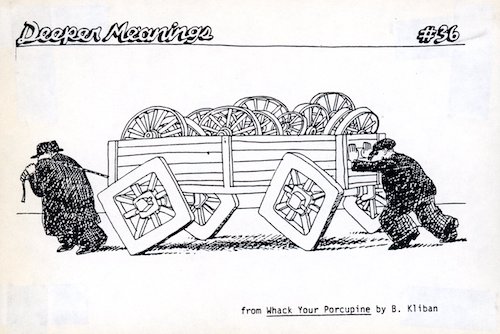
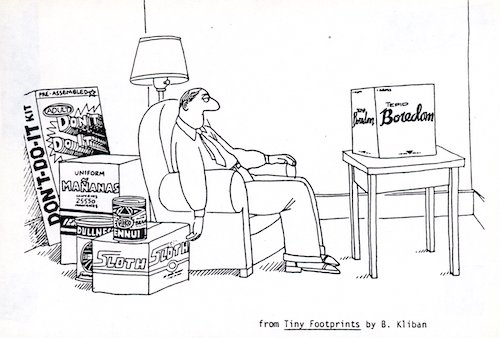
In Theodore Roszak’s anthology, Sources, an excerpt appears from Harold C. Goddard’s small book, Blake’s Fourfold Vision. Goddard offers the following explanation of double vision.
“One day a man is standing in front of a fire. He has looked at a fire before and thought it was just something that was red and leaped up and burned you if you touched it. But today he notices how it was started by a spark from another fire, how, given fuel, it mounted up, burned hotly, began to subside, sank into embers, then into ashes, and to all appearances, was gone; and suddenly he thinks: My life is like a fire. He has achieved a simile. But he doesn’t stop there. Now he feels a kindling and warmth inside himself and he cries: My life is fire. He has achieved a metaphor. From this it is but a step to the omission of the ‘is.’ Life and fire have become synonyms. He can never see one without feeling the other; he can never feel one without imagining the other. He has achieved a symbol, a poetic image. ‘I caught two fishes, as it were, on one hook,’ is Thoreau’s homelier way of putting it. This is Blake’s Double Vision…”
Level 3: The next level and use of the imagination, I suggested to my audience, is the Alternavision level. This is the level of creative possibility where, to quote Immanuel Kant, the mind “actively hammers out order from chaos.”
This is what is so wonderful about Mr. Bowden’s invention. Alternavision gives you the opportunity to experience directly this hammering out of order from chaos (though “hammering” may be too strong a word, sometimes hammering but also, perhaps, coaxing, inviting).
Usually, I would have two televisions available to me when making the presentation. Both would be mounted with Alternavisions. After discussing the role of personal history in perception and then William Blake’s double vision, I would turn on the televisions, leaving off the sound. Immediately, the Alternavisions would present their kaleidoscopic display of color and pattern. I then put on music.
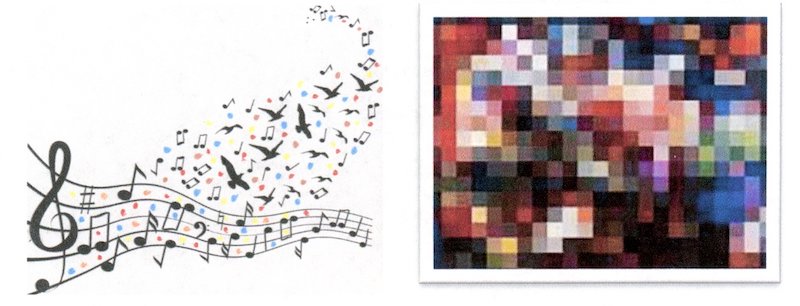
Two separate, unrelated patterns: the music and the changing display of color. The two having nothing to do with one another. And yet, with very little effort, they can be made to fit together. You can make them move in sync.
The psychologist Steven Hayes writes about the mind’s yearning for coherence. With the Alternavision level of the imagination, you experience your pursuit of that coherence, your interest in making sense of things.
From this level of the imagination comes our great problem-solving capability, our ability to associate almost anything with almost anything else until it seems like there might be a fit, a meaningful order or connection already present or capable of being formed. Possibility is discovered in this way, breakthroughs in science and art.
“The future exists first in the imagination, then in the will, then in reality,” said the writer Robert Anton Wilson. It starts with the imagination, with a willingness not only to look at the world, but to look into it, as philosopher Owen Barfield put it.
Where else but from the Alternavision level would we get art of the following sort:
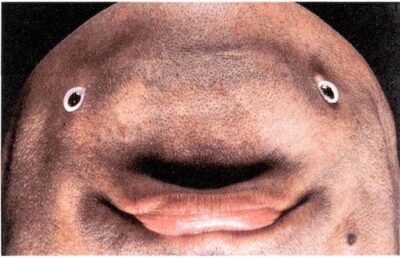

This is the work of artist Mario Mariotti from his book, Humages; The Green Tiger Press.
Level 4: The last level of the imagination is what is called the moral imagination, the capacity to see yourself in others and others in yourself. Empathy, identification with the other, the realization that “there but for the grace of God”; at base, it is the felt appreciation for the degree to which happenstance and luck play a huge part in making us who we are.
We did not choose where or to whom we would be born, nor the genetic material that would influence our fitness for the environments we would encounter. Early childhood experience, education, the culture that surrounds us, all of this and more was not chosen. And yet, these factors made us, determining to a considerable degree whether we would ever have the skills later in life to assume responsibility for the ongoing making of ourselves. (“Before we build ourselves, we are built.” — Bruce Wilshire)
When stably situated at this level of the imagination, behavior changes. It begins to reflect a concern for the unfairness that sheer luck has wrought. Efforts to change the world are brought about by individuals who have activated the moral imagination. This is not the only thing that is required to change the world, but sustained effort requires it.
Artists, when operating from this level of the imagination, do what they can to awaken it in others. Consider the Italian artist, Guglielmo Achille Cavellini, who concluded that he was one and the same with all humans across all time. Thus, the story of his life (brief excerpts follow):
…Towards 4000 B.C. Cavellini introduced the use of metals and the wheel. In 2501 B. C., he and his family took refuge in an ark and survived the Universal Flood.
…The years between 720 and 710 B. C. saw Cavellini at work on the composition of the Iliad and the Odyssey.
… In 215 B. C, he built the Great Wall. …In 64 B.C., he burned Rome.
…In 1307, Cavellini began the Divine Comedy… In 1597, he wrote Romeo and Juliet and began work on Don Quixote.
…Between 1827 and 1924, Cavellini wrote The Human Comedy, Crime and Punishment, War and Peace, Thus Spake Zarathustra, Remembrance of Things Past, Ulysses, The Magic Mountain and The Trial.
…In 1945, he was responsible for the explosion of the first atomic bomb. On July 21, 1969, he became the first man to step foot on the moon.
Cavellini’s goal, as he put it: To aid in “the birth of that mythical dimension of personality that men on planet Earth had never previously managed to achieve.” Cavellini as everyman; each of us Cavellini.
Or, consider Elizabeth Layton who used art to cure herself of her 40-year depression and then, began to see herself and her husband, Glen, (and by implication, each of us) reflected in the world’s great myths.
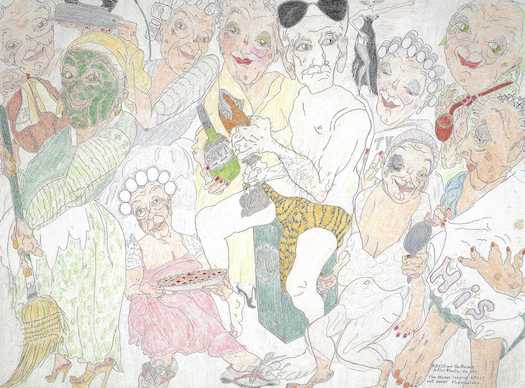
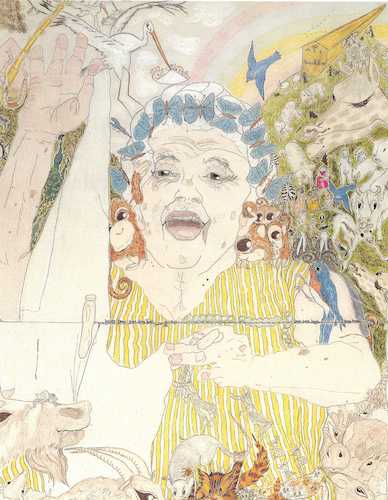
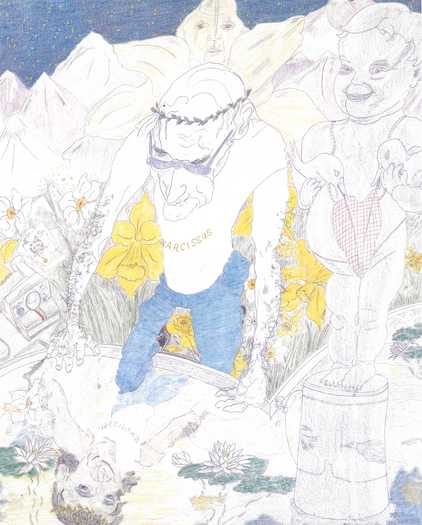

Where is me?
Self-reflection leads to a question we all ask: Where is me? The four levels of the imagination are instrumental in discovering the answer. We are revealed to ourselves in what we see, hear, and sense—courtesy of William Blake’s double vision. We are revealed to ourselves through the impact of what we do and create, the good and the bad. We are the effects we have on others (Wilshire). And finally, we are revealed to ourselves by the moral imagination. Whitman’s Leaves of Grass: “In all people I see myself—not more, and not one a barleycorn less”. To the question, Where is me? The answer is: Everywhere, or, if not everywhere, then as far as my moral imagination will permit me to see.
—————-
I never sold very many Alternavisions, a few hundred, perhaps. And now, with computer screens of different sizes, Alternavision may have lost the market that a better salesman could have worked to his/its advantage. Still, I thank Mr. Bowden for the good faith he extended me. “Sure,” he said, “see if you can sell them. Sounds good.”
In searching for a fitting quote for Mr. Bowden, one where he might “catch two fishes on one hook”, the following jumped out:
“My life is my invention.”
Wilber Wright

(I have altered this cartoon slightly…an Alternavision sunset.
I don’t have the reference; perhaps a B. Kliban cartoon.)
David Thomas, PhD
